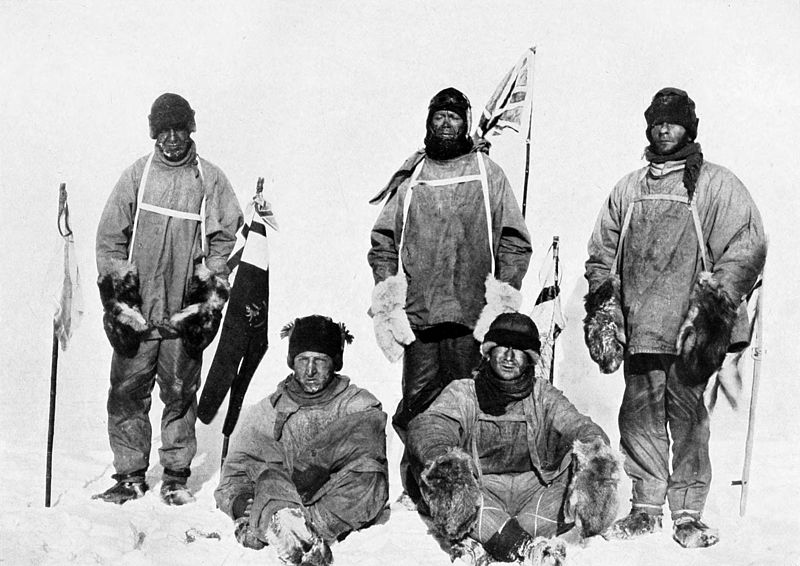The past few months we’ve been celebrating the 100th anniversary of Roald Amundsen becoming the first man to reach the South Pole, while simultaneously saluting his rival, Robert Falcon Scott, who died in his pursuit of that achievement. Today marks another auspicious milestone from that fateful polar race, as it was January 17th, 1912 – exactly 100 years ago – that Scott reached the Pole as well, only to find the Amundsen’s Norwegian flag already planted there.
I’ve written numerous times about Scott and Amundsen over the past few years, and especially in the past few months. Whenever I think about their story, the thing that sticks with me the most is how Scott must have felt to arrive at the South Pole, only to find that he had been beaten by a competitor who came late to the race. Amundsen has spent much of his time in the Arctic, and had hoped to be the first to the North Pole, but when Frederick Cook, and then Robert Peary, both beat him to the punch, he changed tactics and headed south instead.
Scott had spent years planning his expedition and months setting up the final logistics of his approach to the Pole. He and his men traveled for weeks across the Antarctic Plateau, enduring unbearably cold weather, in gear that we wouldn’t consider fit for crossing the street today. But in the end, all of their efforts were in vain, as Amundsen was faster (and smarter!) in getting to the goal, and their hopes were dashed at the bottom of the world.
The disappointment that Scott felt must have been crushing. For years, men had tried to reach 90ºS, only to be turned back time and again. What were the chances that two expeditions would succeed within a month of one another? I imagine he approached that ultimate goal with a sense of pride and accomplishment, with the winds whipping the snow around him, only to have those snows clear for a moment and reveal the dreaded flag of his rival, who has been there five weeks earlier. Scott’s own words say it best, as he wrote in his journal that “The worst has happened” and that “All the day dreams must go.” He would later add “Great God! This is an awful place.”
Reading those words now, a century later, I still get pangs of sympathy for the man. His utter disappointment echos across the decades and still lingers with those of us who admire his courage and dedication. Ultimate, Scott was a tragic character in polar history, which is probably why he is still so revered to this day, particularly in his home country.
Two days after their crushing defeat at the Pole, the Scott party, which also consisted of Edwin Wilson, Henry Bowers, Lawrence Oats, and Edgar Evans, began their trek back to the coast, where their support team was waiting. That first day on the trail must have been one long, cold, and lonely march, with each man lost in his own thoughts and longing for home. Their story wasn’t over yet of course and the suffering was only just beginning.
It is hard to not have empathy for Scott and his men, who would leave their mark on history, even if they didn’t achieve what they had set out to do.
- Gear Review: The Xero Scrambler Mid is an Ultralight Hiking Shoe for Spring - March 1, 2023
- Gear Review: Yeti Roadie 48 Wheeled Cooler - August 18, 2022
- Kristin Harila Continues Pursuit of 8000-Meter Speed Record - August 16, 2022
